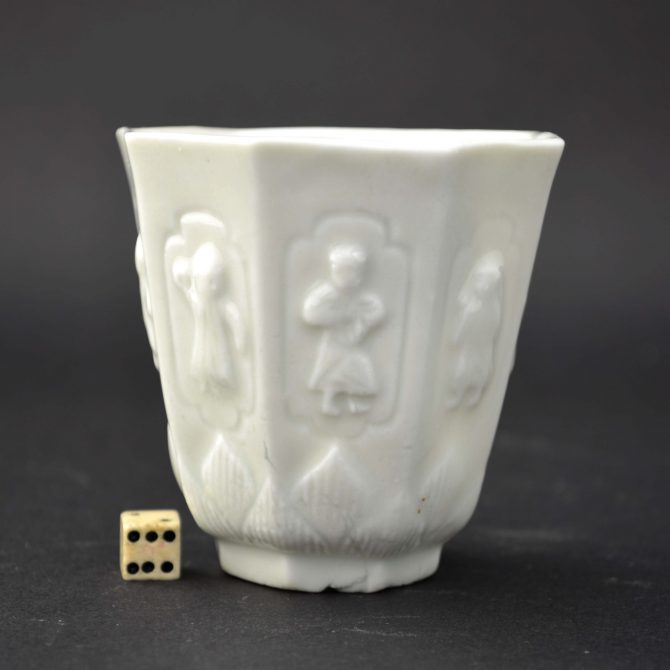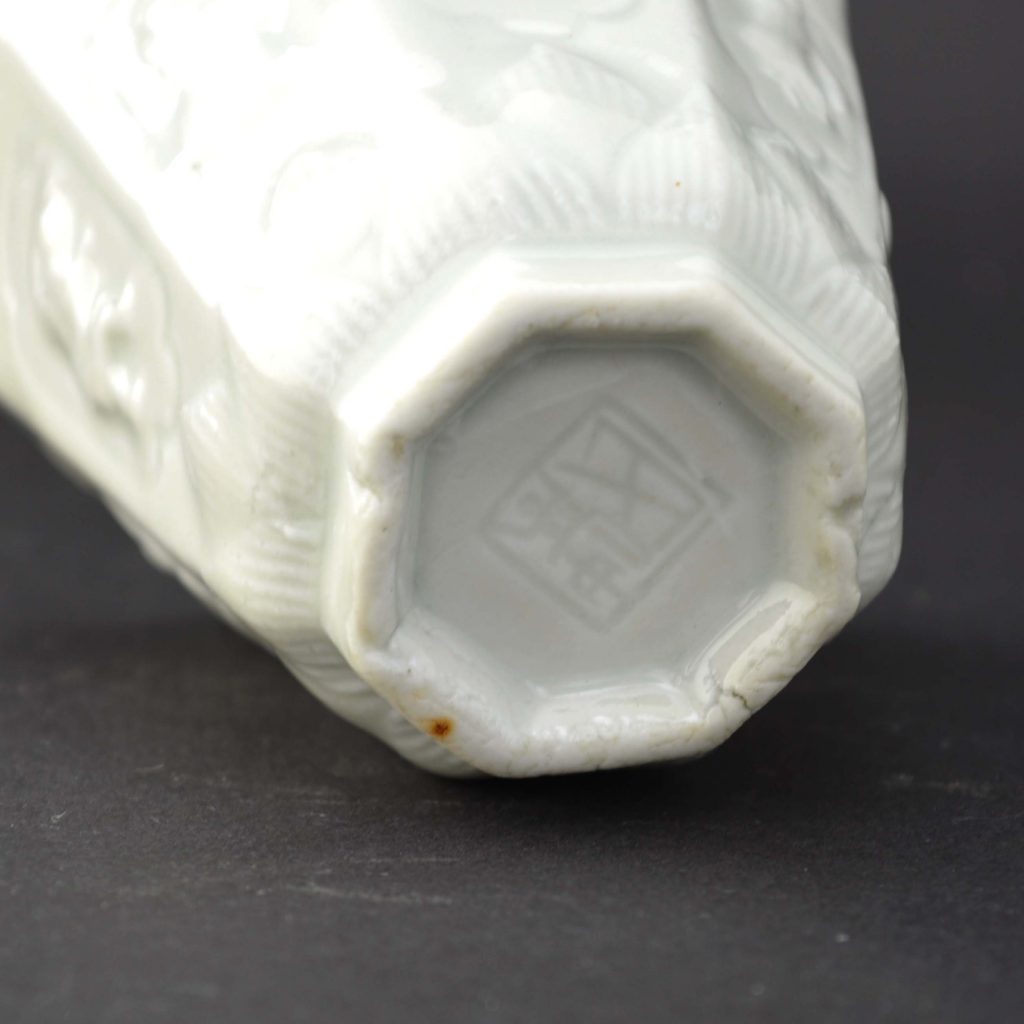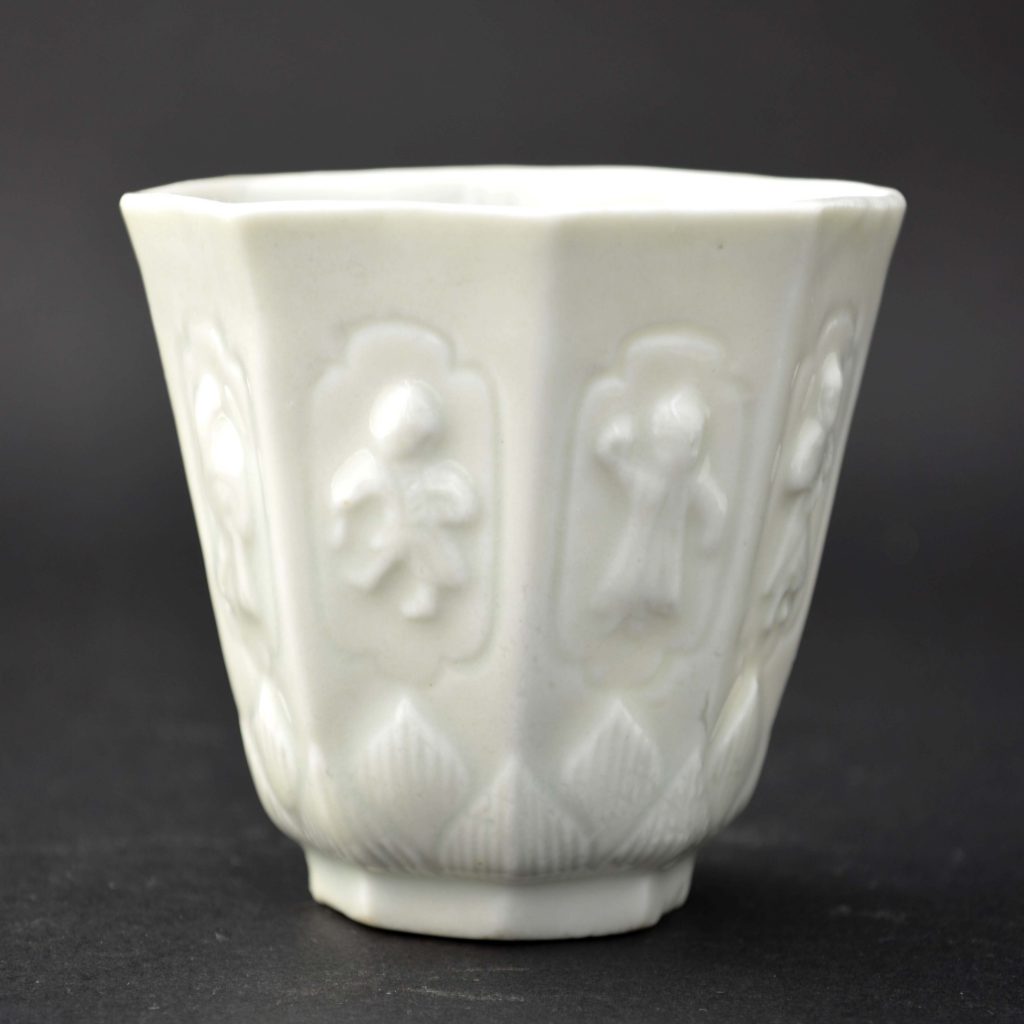
A Kangxi Blanc de Chine Porcelain Beaker Made at the Workshop of Mr. Zhongtun c.1700.
A Kangxi Blanc de Chine Porcelain faceted octagonal beaker made in Dehua, Fujian Province by Zhongtun shi (Mr. Zhongtun) c.1700. The sides with recessed moulded panels containing the Eight Immortals. The base with an impressed seal-mark reading Shi Zhong Tun family.
SOLD
- Condition
- In perfect condition.
- Size
- Height : 7 cm (2 3/4 inches)
- Provenance
- The Helen Espir Collection of European Decorated Chinese Export Porcelain : "a member of the Oriental Ceramic Society and collector, with her husband. Having made a typical collection of Song and provincial Ming blue and white, they decided to concentrate on what used to be called `clobbered` porcelain. She is the author of the standard work on the subject, European Decoration on Oriental Porcelain,2005, the first to examine the work of European decorators on Chinese porcelain throughout the eighteenth and nineteenth centuries, focusing on enamellers in Holland, Germany and England. She has learned Chinese." From Provenance ; Collectors, Dealers & Scholars : Chinese Ceramics in Britain & America (Roy Davids, Dominic Jellinek, Privately Printed, 2011. ISBN 978-0-9570148-0-0).
- Stock number
- 24566
- References
- see : Blanc de Chine (Introduction by John Ayers, S.Marchant & Son, 2006. ISBN 0-9554009-0-2) page 151, plate 120.
Information
Blanc de Chine Porcelain :
The porcelain known in the West as Blanc de Chine was produced 300 miles south of the main Chinese kiln complex of Jingdezhen. The term Blanc de Chine refers to the fine grain white porcelain made at the kilns situated near Dehua in the coastal province of Fujian, these kilns also produced other types of porcelain. A rather freely painted blue and white ware, porcelain with brightly coloured `Swatow` type enamels as well as pieces with a brown iron-rich glaze. However it is the white blanc de Chine wares that have made these kilns famous. The quality and colour achieved by the Dehua potters was partly due to the local porcelain stone, it was unusually pure and was used without kaolin being added. This, combined with a low iron content and other chemical factors within the body as well as the glaze, enabled the potters to produce superb ivory-white Blanc de Chine porcelain.
An early English decorated Kangxi Blanc de Chine faceted octagonal beaker made in Dehua, Fujian Province by Zhongtun shi (Mr. Zhongtun) stock number 24567, shown with the present example. The decoration c.1715-1720.



